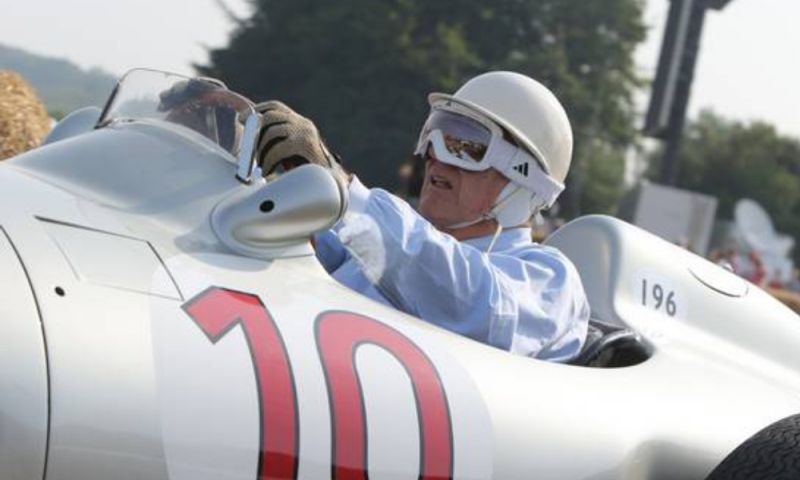GPBlog's Top 50 drivers in 50 days - #9 - Sir Stirling Moss
Moss drives his Mercedes W196 at the 2013 Goodwood Festival of Speed
F1 News

Hello there once again and welcome back to GPBlog’s countdown to the first race of the 2020 season in Australia. We’ve been counting down the top 50 F1 drivers of all time, one day at a time and we’re getting closer to revealing who has taken that number one spot. Yesterday we saw Sebastian Vettel sneak into number ten and today in at nine is Sir Stirling Moss.
Moss is the final driver in our countdown without a world title, but his legacy has lived beyond his failure to take F1’s biggest prize.
He began his racing career in 1948 aged 19 and quickly moved up the ranks, making his F1 debut in 1951 at the Swiss Grand Prix, finishing eighth.
He raced more in the next couple of seasons, failing to score points but he put that right when he joined Maserati in 1954, finishing third at the Belgian Grand Prix.
His potential was recognised by Mercedes, who signed him to drive alongside the great Juan Manuel Fangio for 1955.
Moss played Fangio’s understudy, following him home for 1-2 finishes in both Belgium and the Netherlands before the order was reversed as Moss dominated at home, taking his first F1 victory.
However, the cancellation of four races after the horrific 1955 Le Mans crash that killed driver Pierre Levegh and at least 80 spectators cut the season short, meaning Fangio took the title, his third.
Mercedes pulled out of motorsport following the disaster and whilst Fangio joined Ferrari, Moss made the move to back to Maserati.
Moss took the win in Monaco and after a shared P3 in Belgium he shared the title lead, but only two points in the next two races saw him lose touch with Fangio and Peter Collins.
Second in Germany was a good result but he was now out of contention for the title, despite winning the final race at Monza and securing second in the championship – again to Fangio.
Fangio joined Moss at Maserati for 1957, but the Englishman only stayed for one race before joining Vanwall. Following a crash in Monaco, Moss found some real form, taking pole and win at Silverstone, shared with Tony Brooks.
P5 at the Nürburgring as Fangio performed a masterclass saw the Argentine take yet another title and when Moss took wins at Pescara and Monza it was too late, although he finished second in the title race again.
Fangio participated less in 1958, meaning Moss was well placed to take the title and he showed it by winning two of the first three races.
Ferrari’s Mike Hawthorn proved to be his main competitor, but he was disqualified following the Portuguese Grand Prix, although Moss argued the case of his rival and Hawthorn was reinstated to second place.
Hawthorn had the lead in the championship and extended it when he took another P2 at Monza whilst Moss failed to finish.
However, because only the six best race results counted towards the title, Moss still had a chance and did everything he could by winning the race. Unfortunately for him Hawthorn took P2 and the title, with Moss missing out due to finishing just five races in the season.
After four near misses, Moss continued into 1959 with Cooper and BRM. Reliability continued to haunt him, finishing just three of the eight races.
Despite this, two wins and a P2 showed he still had the ability and he finished third in the title race, behind Jack Brabham and Brooks.
After another win at the 1960 Monaco Grand Prix, Moss was well in contention for that elusive championship until a serious accident in practice at Spa ruled him out of the next two races.
He returned for the last two races, winning in the USA and claiming third in the standings once again.
In 1961 his Lotus wasn’t as competitive as the powerful Ferraris and they also struggled with reliability. Despite this, Moss still took wins at Monaco and the Nürburgring, finishing third in the standings once again.
Moss crashed heavily at Goodwood before the start of the season and was in a coma for a month. He returned to racing when he recovered but decided to retire after not feeling the same control of the car as before.
Sir Stirling Moss may not have won a Formula One title, but his misfortune in attempting to win won is bad luck of the highest order. He had superb car control and was one of the greatest drivers of his era and deserves to be considered among the very best to grace the F1 world.

